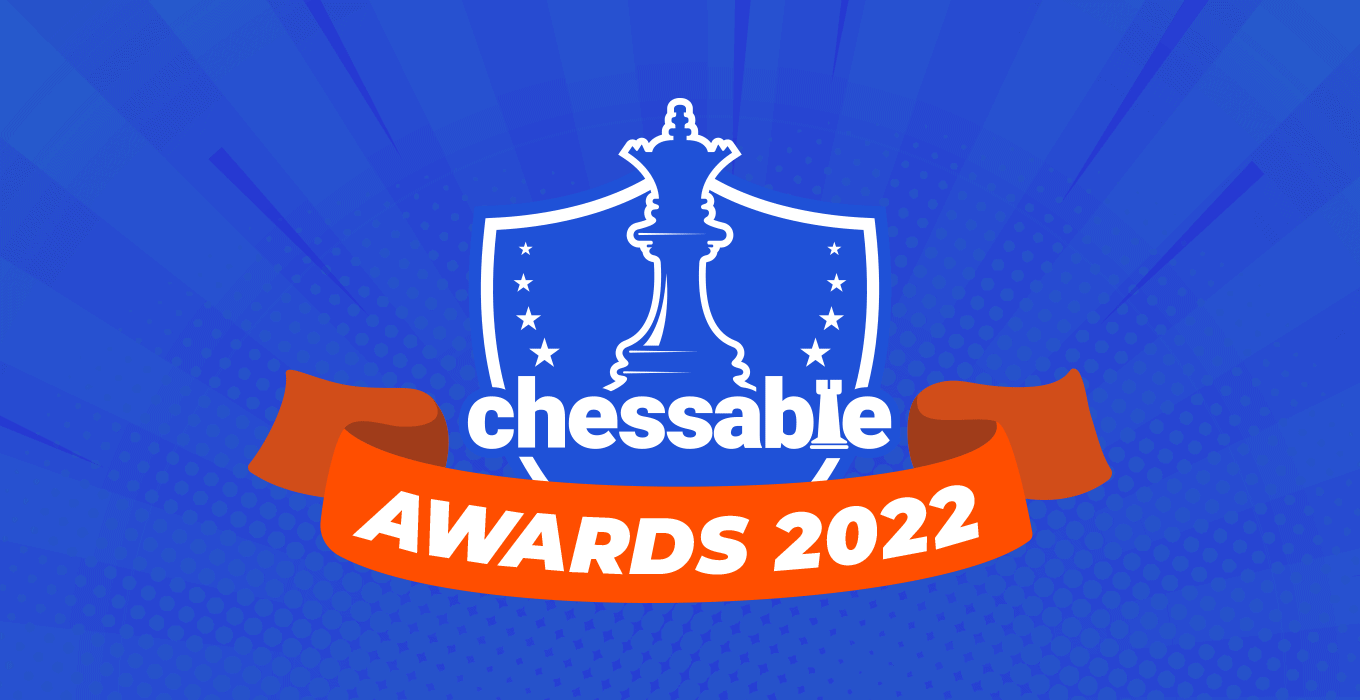In the first half of January my new course 1.d4 Simplified was published. In this post, I’d like to describe the process of how my courses come to life, at the same time sharing some examples from my latest one.
In modern theory, all the main lines lead not only to equality but to positions where there is very little play left. This means that the primary idea of any opening preparation, especially with White, is to provide variations where there is play left in the position.
In most cases, the position will be equal, it’s impossible to find an advantage for White against Black’s main openings. Equality is not a problem as long as the positions have life in them.
Therefore, the first step for me is to think of variations that can lead to such positions. What helps me a lot is that I have a broad knowledge of opening theory, knowing a lot of games and variations that have been played throughout history, and I also follow the latest games closely. This allows me to quickly notice a new opening idea and then explore that variation in greater depth, sometimes connecting it with the historical predecessors.
Sometimes the new ideas come from the latest games, but sometimes I remember old games and forgotten lines that I feel need more detailed explorations.
And sometimes, I have ideas on my own, feeling that perhaps a certain line deserves more attention than it currently has.
After the ideas have formed, there comes the hard part.
I need to “convince” the engine that these ideas are worthy. In other words, to confirm that these ideas really lead to positions that can be played on, positions that the engine cannot easily “dry up.”
Very often I fail in this endeavour. The engine simply refutes my ideas by showing easy solutions or even draws for Black. But the engine can also help me along the way. Often it would propose an alternative line or idea that will make the line work. It’s a cooperation between man and machine to make variations work.
This analysis takes up the majority of the time. It’s hard to make all lines work and often I end up at dead ends or get stuck in positions where I run out of ideas. What usually helps is the use of different engines. Different engines sometimes have different ideas and they can save the day and the amount of work done beforehand.
After the analysis it is time to select the lines that will make it to the course. These need to be the most important lines for the variation, the lines that are the most instructive ones and make the variation easier to remember and understand. That is why I often choose lines that are not the main choices of the engine, while they still are objectively good. What is important is to make the opening easier to learn and understand – what is the point of selecting the engine’s main choice if it leads to a messy position where tons of forcing lines are necessary to be remembered when a simpler, positional alternative is available? I don’t see one, so this is an important guiding principle for me. Forcing lines are proposed only when they are strictly necessary.
An important factor for my courses is the compactness. I don’t want to go too wide with the lines. I strive to give the necessary optimum for playing an opening, with everything additional covered as a clickable or explained with words.
While choosing the lines I also write the textual explanations. I pay particular attention to these. I strive to make my language as clear as possible, to convey the ideas in a way that can be easily understood and absorbed. Clarity is my main principle when I write and this clarity is what makes the understanding easier.
When the files are ready, lines selected, and the comments are written, it is time to record the videos. In the videos, I always like to add value, so some lines that are mentioned in the comments often receive more attention. In this way the trainables, the clickables, and the video work in unison to give the most complete coverage of the opening in question.
To illustrate the above with examples from my latest course, I’ll share a few examples with you.
I had a very hard time coming up with something interesting against Black’s main openings after 1.d4 Nf6 2.c4 e6. I wanted to be practical and an idea that I derived from modern practice was the move 3.Bf4, a move that became popular only lately. This made my choice both popular, following the latest theory, and practical, as it successfully avoided Black’s main openings like the Nimzo and the QID.
The Grunfeld Defence was another tough nut to crack. What White players do against it is to prepare a one-game idea with the intention to catch the Black player unprepared or perhaps to take him to a line where he won’t remember his preparation. This means that in the next Grunfeld game, the White player would have to have another fresh idea ready. This is a hit-and-run approach that is not applicable to a stable repertoire.
Then I remembered Grischuk’s idea from 2013. He employed the move-order 1.d4 Nf6 2.c4 g6 3.Nf3 Bg7 4.e3, withholding the development of the knight on b1 in order to avoid the Grunfeld – without it, the central break …d5 doesn’t really work. This move-order meant that against the KID White had to play with a pawn on e3 rather than on e4, but after analysing these positions I came to the conclusion that they were quite playable, especially with some fresh ideas that I discovered along the way. So, remembering an old idea solved the problems of two major openings for Black, the Grunfeld and the KID.
Against the QGD I wanted to be practical and this left little choice – the Exchange Variation is by far the most practical choice against it, immediately defining the pawn structure. A recent development in the Carlsbad structure has been the development of the bishop to f4, rather than the common g5. This was just perfect for me, as the mentioned move-order with 3.Bf4 above could transpose to the QGD, so this fit in ideally. The modern ideas in the QGD Exchange also include the plan devised by AlphaZero, so modern technology also played a part in devising the repertoire against this ultra-solid opening.
As you can see, creating a course on Chessable is anything but easy! It takes several months to go from start to finish and the work is grueling. When I am working on a course, my mind is constantly occupied with ideas, moves, and lines, and I keep refining these literally until I fall asleep at night!
On the other hand, I must admit that I enjoy this type of work. I love working on openings in a creative way and it gives me great satisfaction when I manage to come up with ideas that I then see used by the best players in the world – I don’t know if they buy my courses, but I am sure that they are fully capable of coming up with those ideas themselves!
As I write these lines, I don’t have the time to enjoy the publication of my 1.d4 Simplified. I am already working on my next course. Stay tuned for more information on that one!





